Honda HR-V Vi X review
Honda’s third-generation small segment SUV is a class act but carries premium pricing into a hotly contested category.
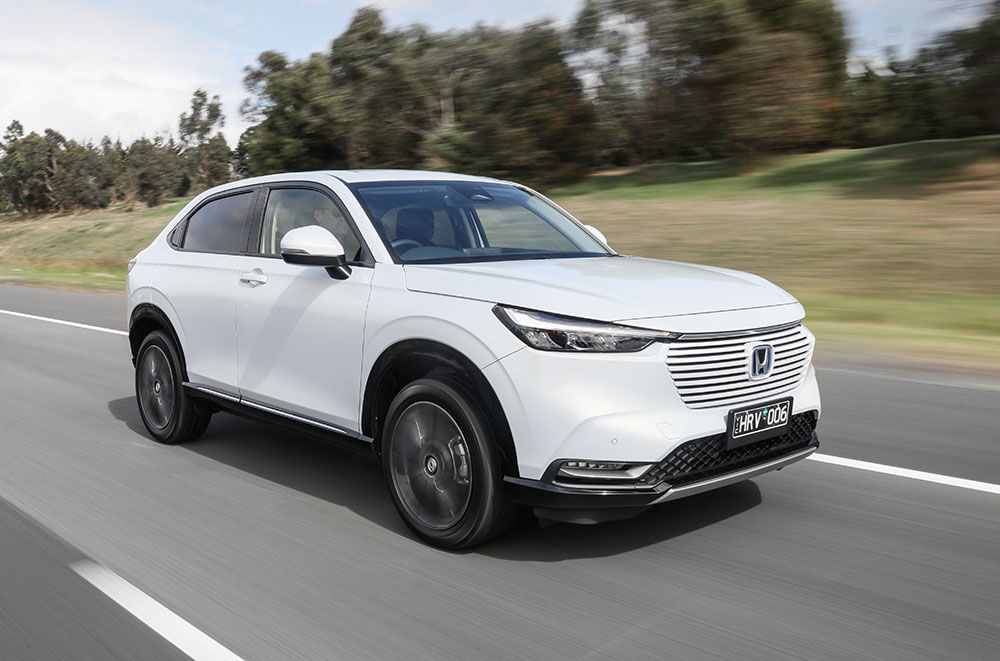
Honda is continuing to stare down critics of its slimline, premium-priced model range in Australia, with the launch of its new HR-V featuring just two model variants.
Crucially, this new third-generation version of Honda’s small SUV is also the latest in the Japanese car maker’s line-up to wear an e:HEV (hybrid electric vehicle) badge, representing the next step in Honda’s commitment to introduce hybrid variants of each vehicle with every full model change in Australia.
We’re yet to drive the new hybrid HR-V, the vehicle tested here being its stablemate and only other variant in the two-car range, the conventionally powered HR-V Vi X, motivated by a 1.5-litre DOHC i-VTEC petrol four-cylinder.
Costing $36,700 driveaway, the Vi X may be the entry-level HR-V but it’s priced at a premium when compared with entry-level offerings from the segment’s two biggest sellers, the MG ZS and Mazda CX-30, costing $21,990 driveaway and $29,390 (MRLP) respectively.
These rivals also have much more extensive model ranges – the Mazda offers an expansive 14-model range priced from $29,390 to $47,390 (MRLP), while among its seven ZS and ZST variants, MG lists the fully electric MG ZS EV Excite for $46,990 driveaway.
By way of comparison, the top-spec twin-motor hybrid-powered HR-V e:HEV L costs $45,000 driveaway.
Honda will need to offer an especially compelling blend of quality and features to put a dent in the category sales leaders and that’s without mentioning the 20 other rivals in this hotly contested category.
Fortunately, the new HR-V puts its best foot forward in the style stakes, its contemporary coupe-like SUV body striking an attractive pose out on the road. The new look embodies Honda’s simple, clean and modern design philosophy, as seen in recent new models including the latest Civic.
The HR-V’s hidden rear door handles are a particularly nice touch and the styling overall does a pretty good impression of a small luxury European SUV, such as you might find from BMW or Audi.
The new model also has more ground clearance than its predecessor but a lower roof height, which along with its raked A-pillar and elongated bonnet accentuates its sleek coupe-like proportions.
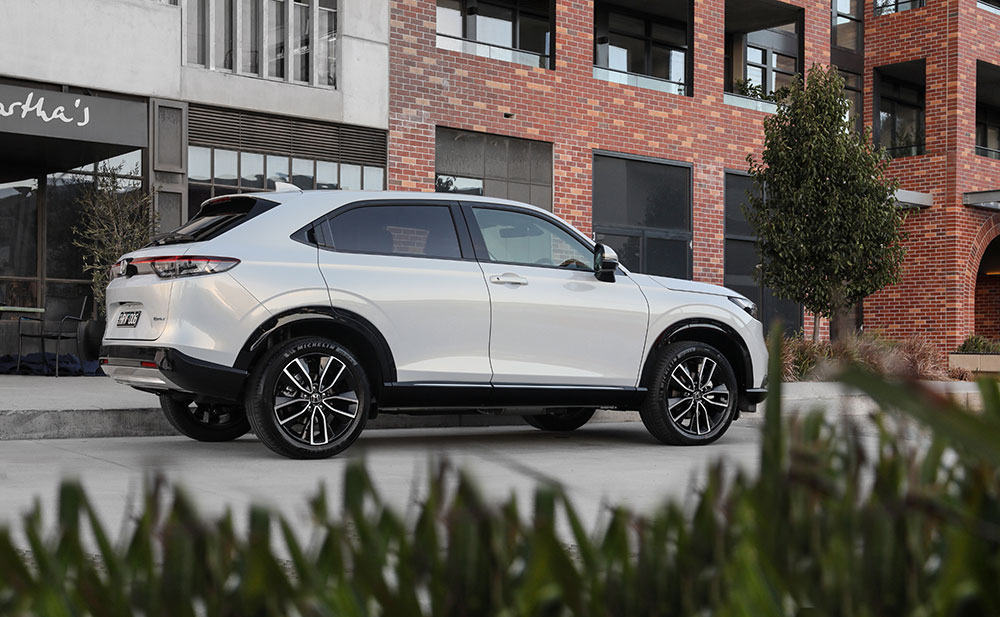
Larger 18-inch wheels lend it a more purposeful look, even though overall vehicle dimensions are similar to the previous model.
The interior is up to Honda’s typically high-quality standards with a modern and minimalist aesthetic featuring an attractive mix of contemporary fabrics and soft-touch materials that emulate the design of the Civic hatch.
The driving position is comfortable, with adequate adjustment and good forward visibility, while the uncluttered and simple-to-use instrument layout adds to the sense of spaciousness with traditional audio and ventilation controls located beneath the touchscreen for intuitive operation.
The nine-inch audio touchscreen also features an easy-to-use interface that’s navigated by smartphone-style swipe controls.
The system enables smartphone mirroring via wireless Apple CarPlay, or a cable connection for Android Auto.
Other features include Bluetooth connectivity with audio streaming, DAB+ digital radio, a four-speaker audio system and Alps Alpine satellite navigation.
Over-the-air (OTA) map and system enable ongoing upgrades to the latest software without having to visit a dealer.
You can rely on Honda to do something innovative with any new model, and in this case it’s the introduction of its new Air Diffusion System, with L-shaped vents positioned in the top corners of the dashboard.
The car maker says the new vents are designed to resolve the problem of passengers feeling uncomfortable with air flowing directly onto them.
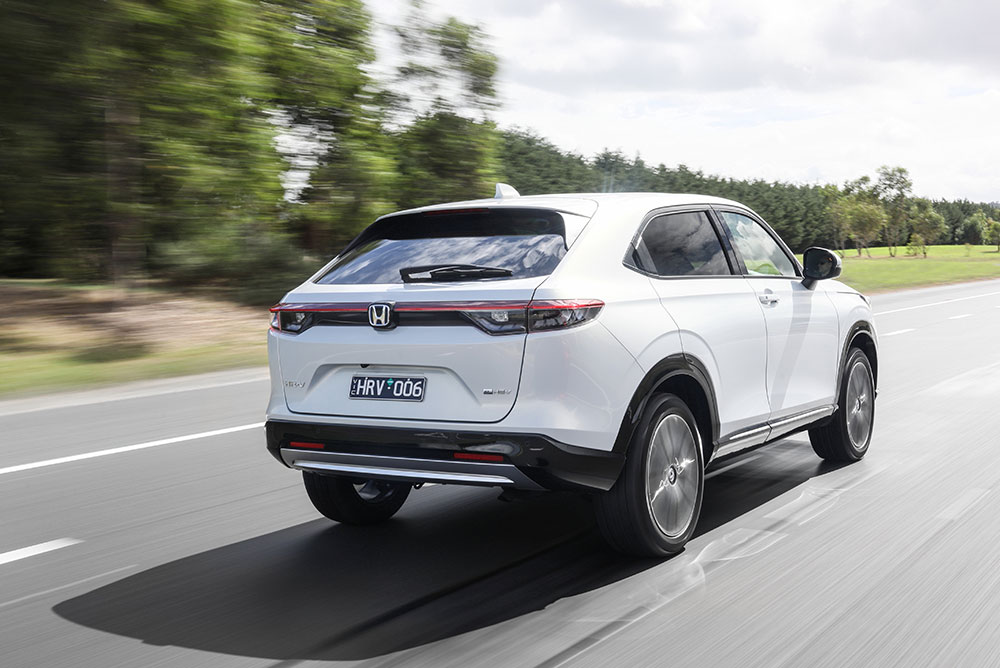
A dial on the edge of the upper dash allows selection of either normal forward-directed air flow, or the Air Diffusion System, which promises to “deliver the restorative effects of a natural breeze to all occupants”.
In the e:HEV L grade, rear-seat passengers also benefit from rear console air outlets, but not in the entry-level Vi X, which seems a bit mean-spirited considering the price tag.
The Vi X also misses the e: HEV L’s rear USB charging sockets, but both models do at least get twin front sockets.
The rear seat is impressively roomy – taller passengers may need to duck their head a bit when getting in or out, due to the coupe-like roofline but once back there its impressively spacious – with Honda claiming more leg and shoulder room than the previous generation HR-V.
The car maker cites the positioning of the fuel tank in the centre of the chassis as the key to the HR-V’s roomy interior, with the design also enabling a spacious boot, accessed via a manually operated tailgate (electric in the e:HEV L).
The cargo floor is fully flat, and the space can be further extended using Honda’s clever rear Magic Seats, which offer both fold-flat or flip-up seat flexibility, depending on the load space required.
Unfortunately, there’s no room for a spare wheel of any kind, the HR-V instead making do with a tyre inflation kit.
On the passive safety front, the compact Honda gets a full suite of airbags plus whiplash mitigating front seats, while its active safety kit includes the latest generation of Honda SENSING technologies.
The latter now includes traffic sign recognition and adaptive cruise control with low-speed follow.
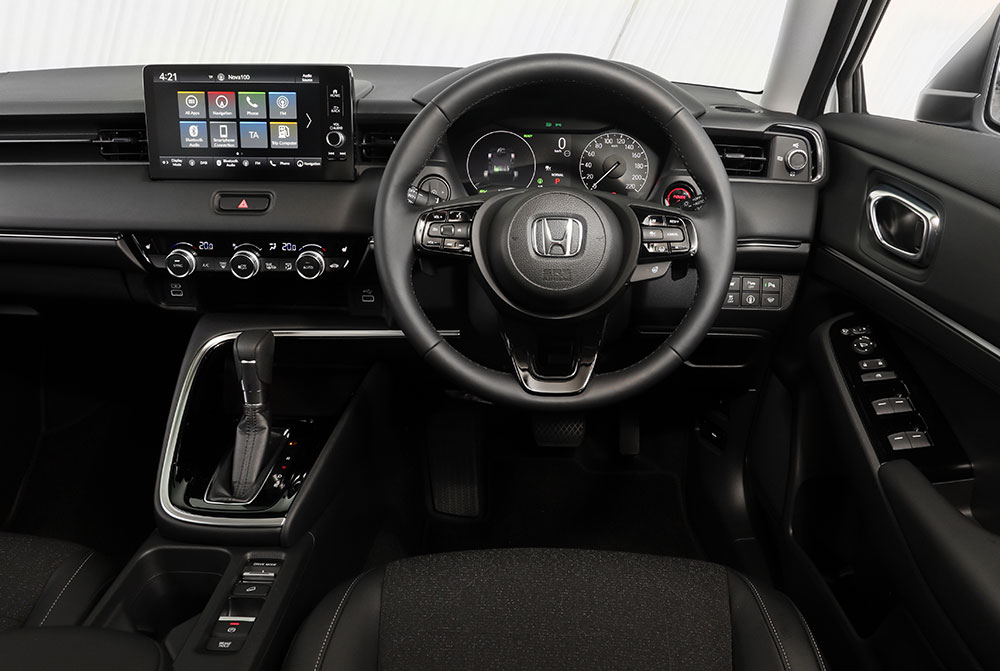
Other driver-assist and safety technologies include forward collision warning, collision mitigation braking, lane keep assist, lane departure warning, road departure mitigation, high beam support, hill descent control and walk-away locking.
Added to this are the HR-V’s electronic brake systems, which include vehicle stability assist, brake assist system, hill start assist, automatic brake hold and hill descent control.
Under the bonnet the Vi X features a 1.5-litre DOHC i-VTEC four-cylinder port-injection four-cylinder, driving the front wheels via a Continuously Variable Transmission (CVT) with step-up and step-down shift control during acceleration and braking, respectively.
The engine produces 89kW/145Nm, with combined fuel consumption of 5.8 L/100km. By comparison, the entry level 1.5-litre engine in the $15k cheaper MG ZS produces 84kW/150Nm and sips unleaded at a rate of 7.1L/100km; while the 2.0-litre engine in the $7k cheaper Mazda CX-30 G20 Pure produces 114kW/200Nm and uses 6.5L/100km.
Bottom line, the Honda offers no major power advantage and only a modest fuel consumption advantage versus these rivals, despite its considerable price premium.
The engine is free-revving and pleasingly responsive in the manner of Honda four-pots, and the CVT transmission smooth and unobtrusive at lower speeds.
The more you get into the throttle, however, the more pronounced are those less-desirable CVT traits of elastic shift feel and engine drone.
The engine spins up willingly under full throttle but then hovers at around 4500rpm unless you back off, which introduces a lot of thrums to the cabin.
There’s a sport model to sharpen the engine and transmission response but no manual shift mode and no paddle shifts.
Dynamically, Honda says the new HR-V has a more rigid body structure and benefits from extensive suspension, steering and braking enhancements so responds more precisely to driver inputs.
That certainly proves true out on the highway where the quality steering feels nicely weighted and accurate, with an impressively smooth and linear movement, and ride quality that is well-judged for most conditions.
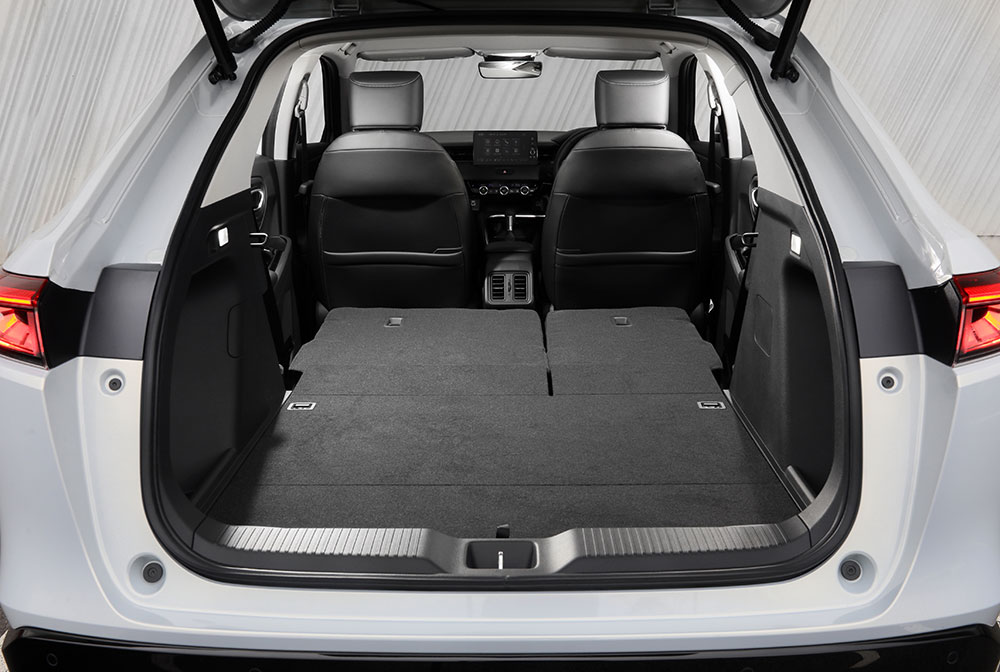
Fitment of liquid-filled rear suspension bushes no doubt helps with the improved ride characteristics
The HR-V’s composure through corners makes it a rewarding and comfortable drive, with above-average dynamics.
The latter is due in part to fitment of Honda’s Agile Handling Assist System (AHAS) which uses the Vehicle Stability Assist (VSA) system to lightly apply the brakes to the inner wheels during cornering, increasing vehicle responsiveness and stability.
It's in the quality of its steering, its polished dynamics, and its design and finish that the HR-V shows its class, and to some extent justifies its high price.
However, Honda’s attempt to position its small SUV as a sub-luxury brand comes slightly unstuck via poor NVH management, with road noise on coarse chip bitumen disappointingly intrusive.
When you overlay this with engine noise when accelerating hard, it’s not a true luxury experience.
On balance, however, the new HR-V is a very polished performer, with a depth of engineering that few of its rivals, bar Mazda, can match.
It’s an enjoyable vehicle to drive and its combination of handsome styling, roomy and versatile interior and above-average dynamics mean it deserves to be on the shortlist of any buyer in this category.
On the debit side, its high purchase and some puzzling equipment omissions may encourage some buyers to look elsewhere.
Key stats
- PRICE: $36,700 (driveaway).
- ENGINE: 1.5-litre DOHC i-VTEC petrol (89 kW/145 Nm).
- ANCAP CRASH RATING: Not yet rated.
- FUEL CONSUMPTION (combined cycle, litres/100km): 5.8 L/100km (133 g/km).
- FOR: Attractive exterior design, roomy and versatile interior, quality materials and finishes, excellent ride, steering and handling.
- AGAINST: Price, manual tailgate, lack of rear USB ports, no spare wheel, tyre noise on coarse chip, engine noise at higher revs.
Know you're covered with RACQ Comprehensive Car Insurance
Related topics
Things to note
The information in this article has been prepared for general information purposes only and is not intended as legal advice or specific advice to any particular person. Any advice contained in the document is general advice, not intended as legal advice or professional advice and does not take into account any person’s particular circumstances. Before acting on anything based on this advice you should consider its appropriateness to you, having regard to your objectives and needs.
Insurance Products (excluding Travel Insurance) are issued by RACQ Insurance Limited ABN 50 009 704 152 (RACQI) and arranged by its agent, RACQ Distribution Services Pty Ltd (RDS) ABN 35 116 361 650, AFSL 567130 and RDS' authorised representatives (including RACQ Operations Pty Ltd ABN 80 009 663 414, AR No. 234978 (RACQO). Conditions, limits and exclusions apply. RDS and RACQO are in the RACQ group of companies. One of the companies in the RACQ group of companies has a minority shareholding in RACQI.
RDS and RACQO have not taken your personal objectives, circumstances or needs into account when preparing advice regarding insurance products and you will need to consider whether the advice is appropriate for you. Read the Product Disclosure Statement (PDS) and any applicable Supplementary PDS before making a purchase decision on this product. You can also access our Target Market Determinations on this website. RDS receives a commission from RACQI for the policies it arranges. RACQO receives fees paid for services it provides to RDS. Further details about remuneration are available on request prior to purchasing.
Banking and loan products issued by Members Banking Group Limited ABN 83 087 651 054 AFSL/Australian credit licence 241195 trading as RACQ Bank. Terms, conditions, fees, charges and lending policies apply. This is general advice only and may not be right for you. This information does not take your personal objectives, circumstances or needs into account. Read the disclosure documents for your selected product or service, including the Financial Services Guide and the Terms and Conditions, and consider if appropriate for you before deciding.
Except for RACQ Bank, any RACQ entity referred to on this page is not an authorised deposit-taking institution for the purposes of the Banking Act 1959 (Cth). That entity’s obligations do not represent deposits or other liabilities of RACQ Bank. RACQ Bank does not guarantee or otherwise provide assurance in respect of the obligations of that entity, unless noted otherwise.
RACQ Bank subscribes to the Customer Owned Banking Code of Practice which establishes higher standards than the law requires. The Code reflects modern consumer expectations and developments in approaches to issues such as consumer vulnerability, guarantors, and supporting customers through financial hardship. Please read our Customer Owned Banking Code of Practice page for more information.
RACQ Operations Pty Ltd (ABN 80 009 663 414 AR 000234978) and Members Travel Group Pty Ltd (ABN 45 144 538 803 AR 000432492) are acting as an Authorised Representative of the issuer of the insurance, Tokio Marine & Nichido Fire Insurance Co., Ltd. (ABN 80 000 438 291 AFSL 246 548). Any advice set out above is general in nature only, and does not take into account your objectives, financial situation or needs. Before purchasing any travel products, please consider the RACQ Travel Insurance Product Disclosure Statement (PDS) and the Target Market Determinations (TMDs) that apply to these products. Whilst the PDS outlines the Terms and Conditions of these products, the TMDs outline the intended class of customers that comprise the target market for these travel products. This will allow you to consider which products best suit your objectives, financial situation and needs and consider the products appropriateness to your personal circumstances. TMDs also outline matters involving the distribution and the review of these products. The PDS, Supplementary PDS and TMDs for each travel product can be found here.
